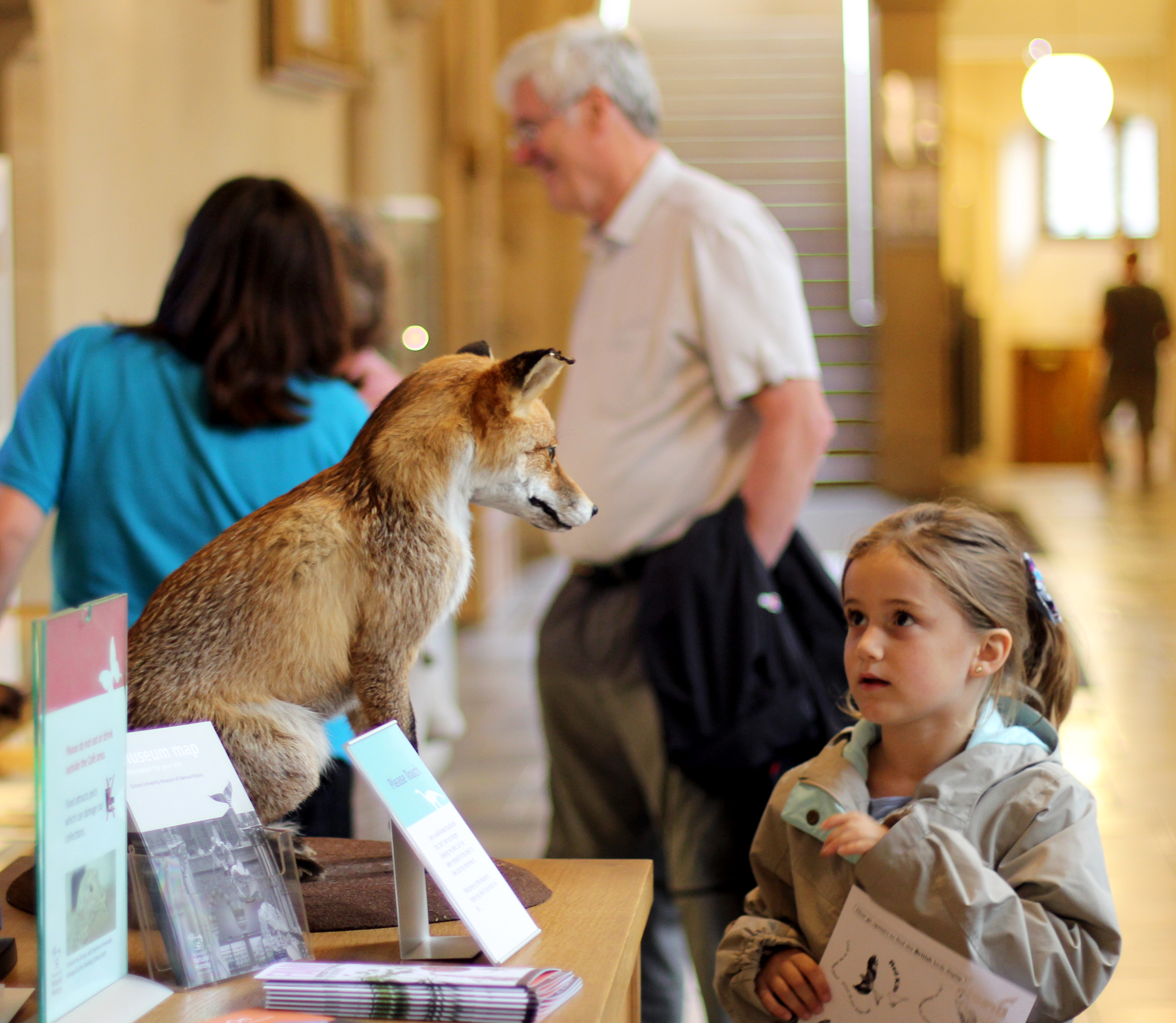Necroaesthetics: Denaturalising the Collection
Anna-Sophie Springer, Etienne Turpin
Published 21 June 2016
It is therefore an important object which governments and scientific institutions should immediately take steps to secure, that in all tropical countries colonised by Europeans the most perfect collections possible in every branch of natural history should be made and deposited in national museums, where they may be available for study and interpretation. Alfred Russel Wallace, “On the Physical Geography of the Malay Archipelago” (1863, p. 233)
And this is perhaps the crucial paradox that the Anthropocene brought to light: different regimes of power will produce different natures, for nature is not natural; it is the product of cultivation, and more frequently, of conflict. Paulo Tavares, “The Geological Imperative” (2013, p. 209–39)

A young visitor encounters a dead fox at the Oxford Natural History Museum, Oxford, UK, 2015. Photograph courtesy Etienne Turpin.
When visiting an ethnographic museum, especially in Europe, the presence of colonial history is unavoidable. The staging of cultural otherness, the black-and-white photographs of past expeditions, the accumulation of non-industrial artefacts, even the fashionable contemporary installations cleverly reflect on these histories, all serving to remind the visitor that the modern museum is a product of European colonialism. Historical ethnographic collections can't pretend that the objects on display were not embedded in scenarios of a certain liveliness before entering the museum. For example, a musical instrument in a vitrine conjures up questions about how it would have been played by someone in the past, and one often wonders about the events, or the violence, that brought it to its current state of exhibition. Even though contemporary ethnographic museums have been under significant pressure for decades to expose their colonial origins, and some have done so with partial success, encountering an ethnographic collection provokes an awkward sense of appraisal because the collection itself remains an index to colonial violence, which is difficult to conceal. How can it be apprehended aesthetically when it has almost certainly been obtained through coercion?
Yet, upon entering the beloved halls of a natural history museum, a strangely naturalised sensibility seems to neutralise the scenography. Among the necroaesthetic presentation of various arrays of taxidermy specimens – from rare turtles to soaring avifauna, from skeletal cetaceans to combative Arctic bears – one rarely feels any anxiety about their origins or the violence that rendered these once live beings into museological curiosities. In their reanimation as natural history collection objects, the specimens on view declare their neutrality, which makes it difficult to connect their presence to the political, colonial, or ecological sites of struggle from which they were extracted.

Birds in the Tasmanian Museum and Art Gallery, Hobart, Australia, 2013. Photograph courtesy of the authors.